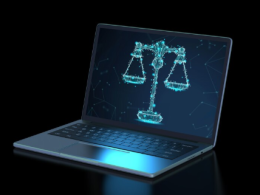In today’s society, it seems that we can no longer trust everything we see or read. From fake news to manipulated images and videos known as deepfakes, technology has made it easier than ever to deceive us. In this blog post, we’ll dive into the world of misinformation and explore how technology is blurring the lines between reality and fabrication. Get ready to question everything you thought you knew about what’s real in our increasingly digital world!
What is a Fake News?
Every day, websites and social media platforms post misleading stories to millions of people. Some are simple hoaxes, while others are more complex deepfakes—videos that seem real but are actually doctored. And as technology makes it easier than ever for people to create fake videos, it’s becoming even harder to tell what’s real and what’s not.
Take the recent case of a woman in the U.K. who was fooled into believing she was watching a video of herself giving a speech at a political rally when in fact it was a deepfake created using doctored footage of her speaking elsewhere. Or consider the recent story of two teenage girls in the U.S. who were arrested after allegedly creating a fake viral video of themselves flipping off a police officer. Or the infamous 2016 US presidential election campaign video propaganda piece “Trump vs Clinton: A Reveal”—which turned out to be an elaborate deepfake created by 4chan users using doctored footage from other videos.[1]
Now, experts say that these kinds of incidents are only going to become more common as technology makes it easier for anyone with an internet connection and some skillful editing software to create fake videos that look completely real. “The challenge is that we’re now entering an era where anybody with access to digital media can create convincing fakes,” said Ronald Deibert, director of the Citizen Lab at Toronto’s Munk School of Global Affairs.[2]
As technology makes it easier
How Technology Is Making it Harder Than Ever to Tell What’s Real
As technology has become more prevalent, it has made it harder than ever to tell what’s real and what’s not. This can have dangerous consequences, as fake news can lead to people believing in false information, and deepfakes can be used to manipulate the public into believing things that are not true.
One example of how technology can be used to deceive the public is with fake news. Fake news is information that is fabricated or Meant to mislead people. It can take many forms, from outright lies to distorted reporting. In 2017, a study found that nearly half of all Americans believed fake news was a serious problem.
One way that technology has contributed to the spread of fake news is by making it easy for people to share stories online. Social media platforms like Facebook and Twitter allow users to share stories by sharing links or embedding them in their posts. This makes it easy for people to share stories without having to fact-check them first.
Another factor contributing to the spread of fake news is the way search engines work. When someone searches for information on Google, for example, they are presented with a list of results based on what they have typed into the search bar. This means that if someone is looking for information about Russian collusion in the 2016 U.S. presidential election, Google will show them articles about this topic written by sites that are affiliated with the Russian government…
The Growing Problem With Deepfakes
Deepfakes are a growing problem. They’re videos that are deliberately manipulated to make it look as if they were filmed by someone other than the person in the video. This can be done with a variety of technologies, including fake facial recognition software and doctored audio recordings.
Deepfakes have been used in malicious ways, like to spread misinformation or to damage reputations. But they’re also being used for more innocuous purposes, like creating parody videos or making fun of friends.
There are many ways to create deepfakes, and they’re becoming easier and easier to make. That’s because technology is making it easier than ever to manipulate videos. For example, you can use fake facial recognition software to create a deepfake of someone else’s face. You can also use doctored audio recordings to change the sound of someone’s voice.
Deepfakes are a growing problem because they’re easy to make and hard to detect as fake. That means that they could be used for malicious purposes or for innocent purposes that end up getting hurt because people can’t tell the difference between real and fake videos.
Conclusion
In recent years, we’ve seen a rise in fake news and deepfakes. These are two types of videos that use AI to create realistic looking images or videos that seem to be real. It’s gotten to the point where it’s hard to tell what is actually real and what isn’t. This technology has been used for both nefarious and benign purposes, and it’s become increasingly difficult for us to distinguish between the two. As our lives become increasingly digitized, it’s important that we understand how these technologies work in order to stay safe online.








